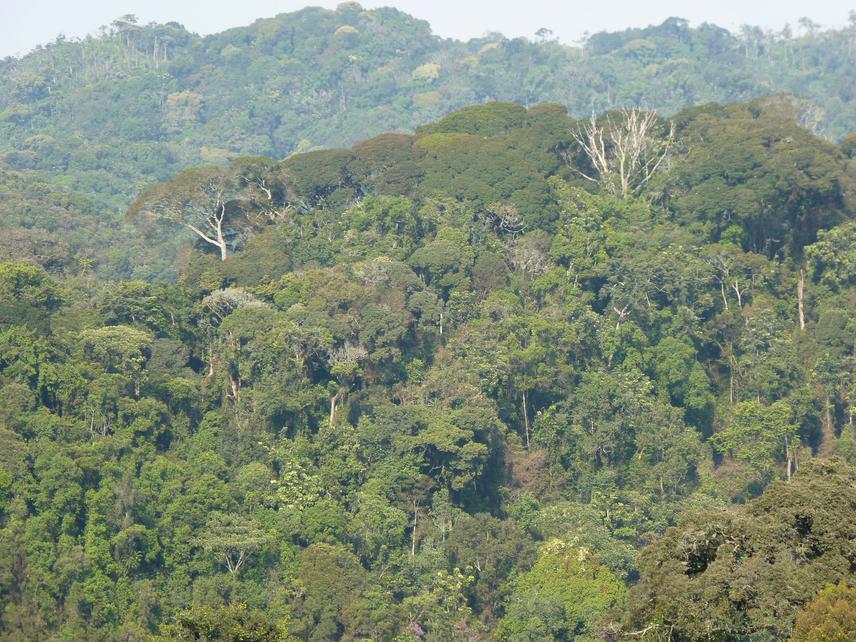Ndikubwimana Innocent
This project consisting in collecting the exotic and indigenous tree’s data along the transects within the Nyungwe Forest will investigate the impact of exotic trees on the natural forest.

Natural forest of Nyungwe without exotic trees.
Purpose of the project: This project was designed in order to conserve the natural forest of Nyungwe National Park against the negative impacts from the existence of the exotic tree species, specifically in regard to their spread into the natural forest and the responses of the hosting natural habitat towards the exotic tree species.
Background: Inside Nyungwe Natural Forest as well as along its boundaries there are the exotic trees stands planted systematically over different time periods and for different purposes including research purpose, covering the open areas existing inside the forest or as conservation buffer zone by the time Nyungwe was under the status of Natural Forest Reserve.
Nowadays, the exotic tree species including Pinus patula, Eucalyptus tree species, Acacia tree species among others keep on spreading beyond from their initial stands towards the natural forest causing impacts on the existing biodiversity species.
Methodology to be used for this project: We are targeting the exotic species called Pinus patula and studying its spread from 6 stands from which we will collect data along 4 line transects of 1 km length each for every stand, the transects will be set set according to the orientation South, North, East and West (Thomas et al., 2009; Lee White & Ann Edwards, 2000). Along each line transect we will set a circular plot of 12.56 meter radius (Ruiz, Hermosilla, Mauro, & Godino, 2014) at 100 m distance form one plot to another along the transect.
The data to be collected during this project: Line transect sampling (Fewster, Laake, & Buckland, 2005) will be used to record observation of exotic tree species distribution, abundance, density of all Pinus patula trees in the sampling area, and forest structure around (Lee White & Ann Edwards, 2000). For abundance data, we will use Braun-Blanquet, and for the distribution data we will use Presence/Absence survey methods. On the same plots, we will also sample the indigenous trees abundance in order to understand the correlation between the indigenous and exotic trees.
Expected results and way forward: This project will provide scientific information on the impact of Pinus patula on the natural forest in consideration to their spread and relationship with the indigenous tree species. So that, the protected area managers will be provided a scientific tool for adequate management actions.